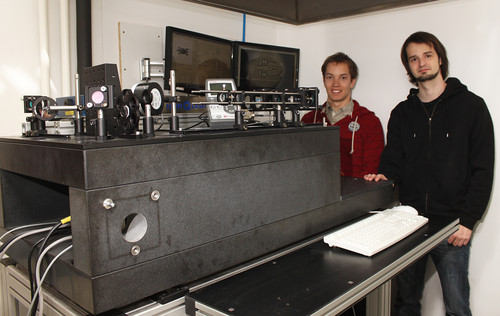|
New 3D printer could create nano-devices in minutes
3/20/2012 |
|
|
Researchers at the Vienna University of Technology (TU Vienna) have developed a 3D printing technology that can quickly print detailed objects in nanoscale using a process called two-photon lithography. It's fast, too: the precision required to print objects with features measured in hundreds of nanometers in width meant the speed of previous attempts at printing nanoscale objects were measured in millimeters per second. In contrast, the TU Vienna team's 3D printer is capable of printing lines of resin at a rate of five meters per second. In a demonstration shown in the video below, the team was able to print a nanoscale model of a 300-micrometer long Formula 1 racecar-made from 100 layers of resin, each consisting of approximately 200 individual lines-in four minutes.
The new process, developed as part of the European Commision's PhoCam program for developing "factories of the future," could make it practical and affordable to print intricate nano-scale structures for use in microscopic machinery and medical applications. One of those is "scaffolds" for promoting the growth of custom-made living tissues from cells, giving cells a structure to stick to. "The technique already showed good applicability for fabricating 3D environments for cells," TU Vienna researcher Jan Torgersen told Ars in an e-mail exchange about the research.
Torgensen added that since the two-photon process isn't limited to printing in layers, but can draw lines in three dimensions, it can be used to embed and connect objects as well. For example, he said, the team has already successfully fabricated nanoscale optical waveguides into an existing electrical matrix. "These waveguides are very promising for various optoelectronic applications," he said.
Photograph by Vienna University of Technology
Jan Torgersen (l) and Peter Gruber (r) im 3D-Drucker-Labor
|
|
|
|
|
|

